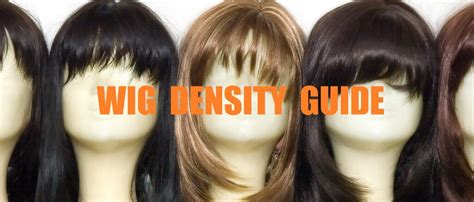What is a 250 Density Wig?
A 250 density wig refers to a wig with 250 strands of hair per square inch of base material. This density is considered a medium-high density, providing a natural and voluminous appearance.

Benefits of 250 Density Wigs
- Natural Appearance: The high strand count creates a realistic and full look, mimicking the thickness of natural hair.
- Volume and Body: 250 density wigs add significant volume and body to hair, enhancing its thickness and fullness.
- Coverage and Concealment: They offer excellent coverage for hair loss, thinning, or damage, providing an undetectable natural-looking appearance.
- Durability: With proper care, 250 density wigs have a longer lifespan than lower density wigs due to their increased fiber density.
Types of 250 Density Wigs
250 density wigs come in various types, including:
- Lace Wigs: Constructed with a delicate lace base, these wigs offer a natural hairline and allow for versatile styling options.
- Machine-Made Wigs: Using wefts of hair sewn onto a cap, machine-made wigs are more affordable and easier to maintain.
- Hybrid Wigs: Combining lace and machine-made elements, hybrid wigs provide the benefits of both types, offering a natural appearance with increased durability.
How to Choose the Right 250 Density Wig
When selecting a 250 density wig, consider the following factors:
- Head Size: Measure your head circumference to ensure a snug and comfortable fit.
- Hair Texture: Match the texture of the wig to your own hair for a seamless transition.
- Color: Choose a color that complements your skin tone and personal style.
- Length and Style: Determine the desired length and style of the wig to create your ideal look.
Applications of 250 Density Wigs
250 density wigs have a wide range of applications, including:
- Hair Loss Concealment: They effectively hide hair loss due to alopecia, chemotherapy, or other medical conditions.
- Fashion and Style: Enhance your appearance with a glamorous and voluminous hairstyle without damaging your natural hair.
- Cosplay and Performance: Create realistic and memorable costumes for stage, screen, or cosplay.
- Protective Styling: Shield your natural hair from heat damage, chemicals, and environmental factors.
Care and Maintenance of 250 Density Wigs
To ensure the longevity of your 250 density wig, follow these care instructions:
- Regular Washing: Wash the wig every 2-3 weeks using a sulfate-free shampoo and conditioner designed for synthetic hair.
- Gentle Styling: Avoid using heat styling tools or excessive brushing to prevent damage.
- Storage: Store the wig in its original packaging or on a wig stand to maintain its shape.
Industry Statistics and Research
According to the American Hair Loss Association, over 50 million Americans suffer from hair loss. The global wig market is projected to reach $10 billion by 2025, with 250 density wigs accounting for a significant portion of the market.
Innovations and Future Applications
Cybernetic Wigs: Researchers are developing wigs that incorporate sensors and actuators to mimic natural hair movement and respond to environmental stimuli.
Tables
Table 1: Wig Density Comparison
Density | Strands per Square Inch | Appearance
—|—|—|
130-150 | Low | Thin, natural-looking
180 | Medium | Balanced volume and coverage
250 | Medium-High | Natural fullness and volume
300 | High | Luxurious volume, may appear slightly unnatural
Table 2: Wig Types and Benefits
Type | Construction | Benefits
—|—|—|
Lace | Delicate lace base | Natural hairline, versatile styling
Machine-Made | Sewn wefts | Affordable, low maintenance
Hybrid | Lace and machine-made elements | Natural appearance, increased durability
Table 3: Wig Care and Maintenance
Frequency | Instructions
—|—|
Washing | Wash every 2-3 weeks with sulfate-free products
Styling | Gentle brushing, avoid heat styling
Storage | Store in packaging or on wig stand
Table 4: Wig Applications
Application | Purpose
—|—|
Hair Loss Concealment | Hide hair loss due to medical conditions
Fashion and Style | Enhance appearance with glamorous hairstyles
Cosplay and Performance | Create realistic costumes for stage or screen
Protective Styling | Shield natural hair from damage
